Milkweed and monarch concerns
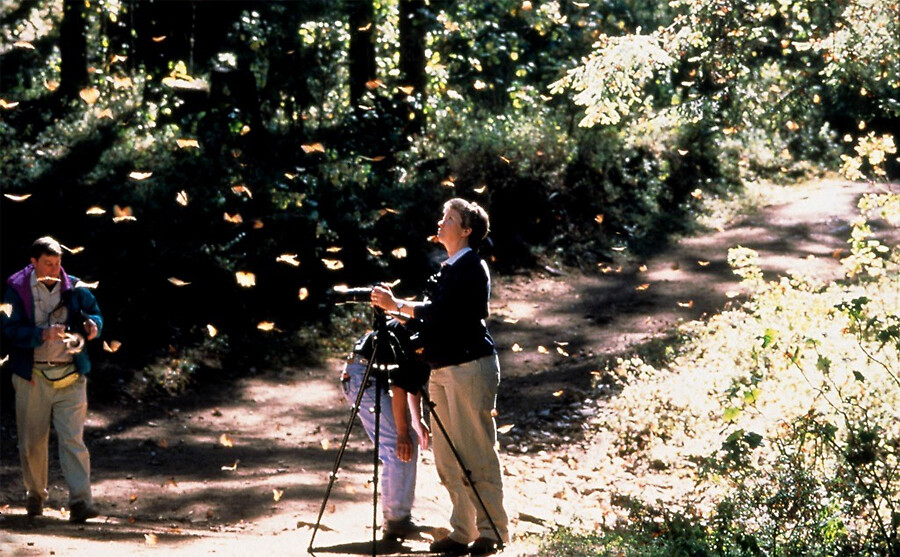
The final fall generation of Monarchs empties out of southern Canada and the United States east of the Rockies and migrates to the mountains of Mexico. This overwintering population is estimated each December. December 2014’s estimate was 57 million Monarchs in Mexico’s mountain top roost sites. Sounds like a lot of Monarchs, doesn’t it? But the harsh reality is that the December 2014 population was 80% below the long-term average of 300 million Monarchs.
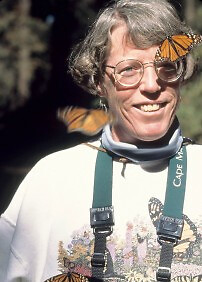 The December 2014 overwintering Monarchs covered just 1.13 hectares (or 2.79 acres). This doesn’t sound like such a large area, does it? The Monarchs that covered these 2.79 acres in the mountains of Mexico are the core group that will repopulate the United States and southern Canada east of the Rockies in 2015.
The December 2014 overwintering Monarchs covered just 1.13 hectares (or 2.79 acres). This doesn’t sound like such a large area, does it? The Monarchs that covered these 2.79 acres in the mountains of Mexico are the core group that will repopulate the United States and southern Canada east of the Rockies in 2015.
Once it warms up in late February, Monarchs mate at the roost sites in Mexico where they have overwintered. By the second week in March they leave the roost sites and journey north. Females, full of fertile eggs, lay their eggs along the way on emerging milkweed. They begin arriving all along the Gulf Coast (Texas, Louisiana, Alabama, Florida) in late March and early April. Each returning female lays about 600 eggs on southern milkweeds.
From egg to adult Monarch takes about one month (or longer if it is a cold spring). So one month later the first generation (the children of the overwintering Monarchs) migrates further north, seeking and laying eggs on Milkweed as they go. This hop-scotch north is accomplished by multiple generations until they finally reach southern Canada, the northern limit of milkweed’s range.
PLANT MILKWEED
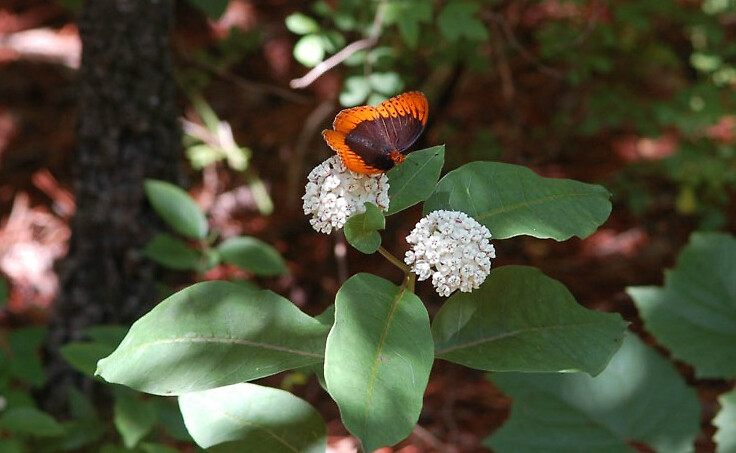 No matter where you live, let’s be ready for 2015’s Monarchs. Plant milkweed with a vengeance so that the Monarch population can swell generation by generation over the summer and fall months. They need all the help we can give them. At Cape May, NJ, we see the first Monarchs sometime from mid-April to mid-May, just as milkweed is poking through the ground.
No matter where you live, let’s be ready for 2015’s Monarchs. Plant milkweed with a vengeance so that the Monarch population can swell generation by generation over the summer and fall months. They need all the help we can give them. At Cape May, NJ, we see the first Monarchs sometime from mid-April to mid-May, just as milkweed is poking through the ground.
There are 108-110 milkweed species native to the United States and Canada. Monarchs use ONLY 27 of these as host plants.
With the combination of (1) Monarchs in the news, (2) growing concern to use native plants in landscaping, and (3) more and more native plant nurseries on the scene, it is now possible to find and plant a healthy selection of some of these 27 milkweed species.
CHOOSE NATIVE MILKWEEDS FOUND IN YOUR AREA
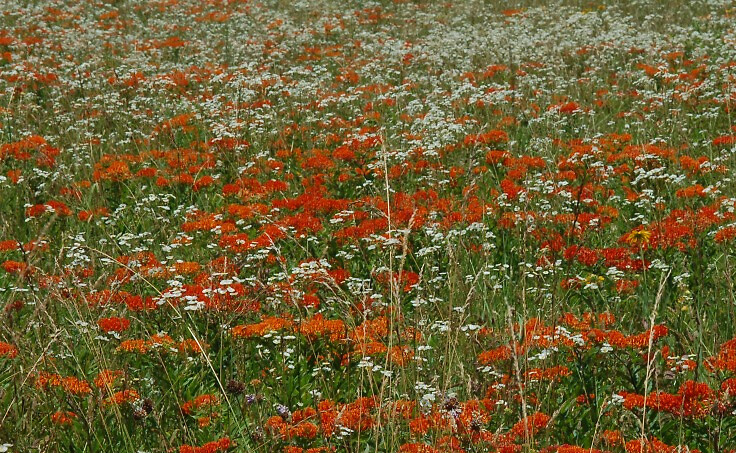 Monarch Joint Venture’s “Plant Milkweed for Monarchs Fact Sheet” showcases milkweed species found region-by-region and includes 20 different species.
Monarch Joint Venture’s “Plant Milkweed for Monarchs Fact Sheet” showcases milkweed species found region-by-region and includes 20 different species.
Monarch Watch’s “Bring Back the Monarchs” campaign also highlights these 20 species with in-depth fact sheets and photos, helping gardeners understand which ones are native to their area and where to plant them (i.e. where they will flourish: in a well drained spot, a damp spot, a woodland, a prairie).
Also read my posts “Milkweeds for Monarchs” and “Monarch Migration at Cape May: Fall 2012.”
If you are lucky enough to have a native plant nursery near where you live, purchase and plant the native milkweeds found in your area in your gardens and meadows. Plant at least 3 of each species in groupings. Perennials will spread over time so the end result will be massed plantings or islands of milkweed. Scatter plantings around your property. In some spots they will flourish, in other spots they may not. By planting groupings of milkweed in a number of places, the plants will tell you where they are happiest.
REPUTABLE SOURCES OF MILKWEED SEED
- Monarch Watch’s “Bring Back the Monarchs” Milkweed Plant and Seed Suppliers
- Xerces Society’s Milkweed Seed Finder
- Monarch Joint Venture’s “Create Habitat for Monarchs”
- Monarch Watch’s Milkweed Seed Kit
PLANT POLLINATOR GARDENS
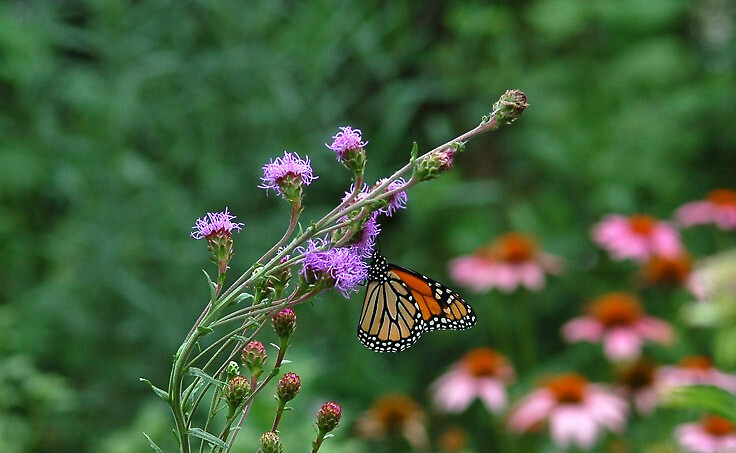 Milkweed is essential for Monarchs to create the next generation, but they also need nectar spring through late fall. Plant native perennials known to be favorites with pollinators and plant them agressively! This website is jam packed with excellent articles and ideas all about that. The Pollinator Partnership’s region by region Pollinator Friendly Planting Guides are also priceless. If you live in the Northeast, my article “How to Create a Butterfly and Hummingbird Garden” shares many helpful tips and includes a list of recommended nectar and caterpillar plants. The list and article contain Butterfly Bush, which I would never include today (because it has been proven to be invasive) so put a big black line through Butterfly Bush and instead plant the many other suggested native perennials.
Milkweed is essential for Monarchs to create the next generation, but they also need nectar spring through late fall. Plant native perennials known to be favorites with pollinators and plant them agressively! This website is jam packed with excellent articles and ideas all about that. The Pollinator Partnership’s region by region Pollinator Friendly Planting Guides are also priceless. If you live in the Northeast, my article “How to Create a Butterfly and Hummingbird Garden” shares many helpful tips and includes a list of recommended nectar and caterpillar plants. The list and article contain Butterfly Bush, which I would never include today (because it has been proven to be invasive) so put a big black line through Butterfly Bush and instead plant the many other suggested native perennials.
WHAT ELSE CAN CONCERNED INDIVIDUALS DO?
 We can educate anyone who will listen (and maybe some who won’t) to see milkweed not as a weed but instead as a lovely native wildflower crucial to the Monarch’s future and the future of all pollinators.
We can educate anyone who will listen (and maybe some who won’t) to see milkweed not as a weed but instead as a lovely native wildflower crucial to the Monarch’s future and the future of all pollinators.- We can nudge, suggest, or even demand that stands of milkweed and other native wildflowers be spared by repeated roadshoulder mowing regimes. We can all work towards more wildflower-friendly roadshoulders, especially the stretch beyond the first 3 to 5 feet that do need to be mowed for safety sake. Do we need 15 to 20 feet of mowed edge along highways? No! See if there is already a program in your area where you can adopt and sign a roadside stretch so that the area is only mowed once a year in late winter, allowing wildflowers to grow, flower, and set seed naturally the rest of the year.
- We can urge educators to incorporate schoolyard habitats into their curriculum, places where milkweed and other host plants and pollinator plants can flourish and benefit Monarchs and other pollinators and become outdoor classrooms of learning. This learning experience would be real, life giving, high impact, and crucial to pollinators like Monarchs – far better than ordering Painted Lady kits through the mail as some behind-the-times teachers still do.
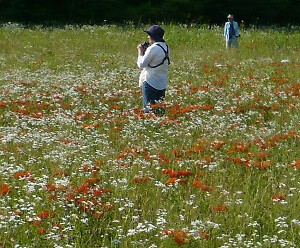
- We can urge our state wildlife management areas to manage their successional fields for native plants by battling the invasive non-native grasses, lespedeza, vines, and multiflora rose thickets that have out-competed native wildfowers and grasses. With some effort these fields could be havens of Butterfly Weed and Common Milkweed.
- We can stop frequenting nurseries that carry problem plants like the very invasives that have spread into our natural areas and wildlife management areas and are crowding out native species. We can support native plant nurseries and native plant sales organized by non-profits.
- We can work to educate and convince those who have acres of mowed lawn to instead consider wildflower meadows full of milkweed and other pollinator plants and host plants. Great tutorials are available in Catherine Zimmerman’s excellent book and DVD, Urban and Suburban Meadows, and through her latest project, Hometown Habitat.
THE MONARCH’S DECLINE IS COMPLEX
The Monarch’s complex decline is succinctly explained by Journey North. Be sure to read through it and all the links. I shared some of the issues in my post, Where are the Monarchs?
Read and understand OE, Ophryocystis elektroscirrha, a protozoan parasite that is infecting Monarchs and Queens. Learn that OE spores live on and persist on Tropical Milkweed where this non-native plant has become perennial, infecting healthy Monarchs as they land on it to lay eggs or nectar. Anyone living where Tropical Milkweed is now perennial should NOT plant it or cut it to the ground in winter to eliminate any OE spores.
TROPICAL MILKWEED CONCERNS
Recently, our local paper (the Press of Atlantic City in New Jersey) had fun pointing the finger at wildlife gardeners as being part of the Monarch free fall, claiming that well-intentioned wildlife gardeners who have planted Tropical Milkweed, “may actually be killing Monarchs.” The Press certainly stirred the pot. My phone buzzed. My e-mail box overflowed. Nurseries wanted to know if they should grow it. Gardeners wanted to know if they should plant it.
Indeed, if you live in Florida, Georgia, South Carolina, Tennessee, Louisiana, Texas, and some coastal areas of southern California, where Tropical Milkweed survives the winter, you should NOT plant Tropical Milkweed. OE spores can survive on Tropical Milkweed through winter months and can cripple or kill healthy Monarchs that come in contact with the OE spores on those plants.
These two excellent article explain this serious threat in areas where Tropical Milkweed has become a perennial:
- Tropical Milkweed: To Plant it or Not, It’s Not a Simple Question
- Native Habitats for Monarch Butterflies in South Florida
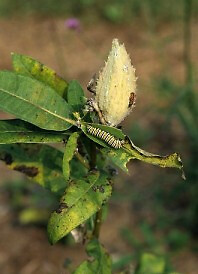 Once you’ve planted all the milkweeds native to your area that are suited to your site, then consider complimenting them with the annual Tropical Milkweed if and only if you live where it is not perennial. Here in southern New Jersey Tropical Milkweed is an annual, dies back after the first frost, and must be planted from seed each spring. So it can not harbor OE over the winter. Another argument that some claim is that Tropical Milkweed is keeping Monarchs here later than normal in the fall. Common Milkweed is still in leaf late in the fall and I have found Monarch eggs and caterpillars on Common Milkweed in early November. That being the case, Tropical Milkweed can not be said to be keeping Monarchs here any later than the native Common Milkweed is keeping Monarchs here. Instead here in South Jersey and other places where it is not perennial, annual Tropical Milkweed serves only as additional nectar and host plant material.
Once you’ve planted all the milkweeds native to your area that are suited to your site, then consider complimenting them with the annual Tropical Milkweed if and only if you live where it is not perennial. Here in southern New Jersey Tropical Milkweed is an annual, dies back after the first frost, and must be planted from seed each spring. So it can not harbor OE over the winter. Another argument that some claim is that Tropical Milkweed is keeping Monarchs here later than normal in the fall. Common Milkweed is still in leaf late in the fall and I have found Monarch eggs and caterpillars on Common Milkweed in early November. That being the case, Tropical Milkweed can not be said to be keeping Monarchs here any later than the native Common Milkweed is keeping Monarchs here. Instead here in South Jersey and other places where it is not perennial, annual Tropical Milkweed serves only as additional nectar and host plant material.
Let’s all work together to do what we can to save Monarchs. A population 80% below the long-term average, and covering only a paltry 2.79 acres, is a true crisis we need to respond to.